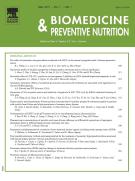Age-related changes of epicardial fat thickness - 14/03/12
 , Mariangela Pia Dagostino a, Antonio Greco b
, Mariangela Pia Dagostino a, Antonio Greco bAbstract |
Background |
Epicardial adipose tissue is correlated to the amount of visceral fat and is a marker of metabolic and cardiovascular risk. Aging alters body fat mass and its function. Epicardial fat (EF) thickness, as measured by ultrasonography, reflects intra-abdominal visceral fat and is related to features of the metabolic syndrome and to cardiovascular risk. The aim of our study was to evaluate differences in the EF thickness between young-middle aged and old aged subjects.
Methods |
We evaluated EF thickness in 26 young-middle aged subjects (age±SD 45.9±10.3 years) compared to 50 old aged subjects (age±SD 76.1±7.3 years) with the common cardiovascular risk factors. Each subject underwent transthoracic M-mode echocardiogram to measure EF thickness.
Results |
Old aged subjects had thicker EF (11.3±1.9mm versus 9.3±2.8mm, p<0.001). A statistically significant positive trend was evidenced between age and epicardial fat thickness (R=0.437, p<0.001). Univariate linear regression analyses evidenced that EF correlated positively with age (p<0.001), obesity (p=0.003), dyslipidemia (p=0.01), arterial hypertension (p=0.047) and multivariate linear regression models showed that EF correlated positively with age (p<0.001), male gender (p=0.025) and obesity (p<0.001).
Conclusion |
epicardial adipose tissue is more abundant in the elderly and is correlated to visceral adipose tissue depots, indicating a higher cardiometabolic risk especially in male subjects.
Le texte complet de cet article est disponible en PDF.Keywords : Age, Epicardial fat, Cardiometabolic risk, Nutrition
Plan
Vol 2 - N° 1
P. 38-41 - janvier 2012 Retour au numéroBienvenue sur EM-consulte, la référence des professionnels de santé.
L’accès au texte intégral de cet article nécessite un abonnement.
Déjà abonné à cette revue ?

